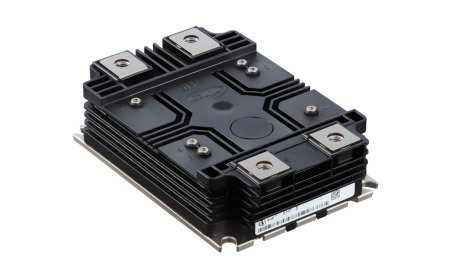Imec Advances 5G Technology with Breakthrough GaN-on-Si MISHEMTs
Imec unveils groundbreaking aluminum-nitride/gallium-nitride (AlN/GaN) MISHEMTs on silicon, offering superior performance and cost-efficiency for 5G-advanced applications.

At the 2023 International Electron Devices Meeting (IEEE IEDM 2023), imec, a leading research and innovation hub in nanoelectronics and digital technologies based in Leuven, Belgium, unveiled a significant advancement in semiconductor technology. Their presentation of aluminum-nitride/gallium-nitride (AlN/GaN) metal-insulator-semiconductor high-electron mobility transistors (MISHEMTs) on 200mm silicon substrates marks a substantial leap forward in the development of 5G-advanced technology for base station and mobile device applications. Operating at 28GHz, these devices exhibit high output power and energy efficiency, surpassing other GaN MISHEMT device technologies in performance, while also leveraging the cost benefits of silicon substrates for industrial manufacturing.
Gallium-nitride (GaN) based (MIS)HEMTs are emerging as a cornerstone for 5G-advanced high-capacity wireless communication, the next evolutionary phase in 5G technology. Known for their outstanding material properties, GaN-based devices have an edge over traditional CMOS and gallium-arsenide (GaAs) HEMTs, particularly in terms of output power and energy efficiency. This makes them highly suited for two distinct RF applications: power amplifier circuits in mobile devices, which operate at relatively low voltages (below 10V), and base stations where the required voltages are higher (above 20V). Despite the potential of GaN-on-silicon-carbide (SiC) devices in high-voltage applications, their high cost and limited size have been deterrents. Here, imec’s GaN-on-Si technology offers a significant cost advantage and potential for scaling up, although previously the performance of GaN-on-Si based (MIS)HEMTs lagged behind their counterparts.
Nadine Collaert, imec fellow and program director advanced RF, explains the challenge and the breakthrough achieved: “The challenge is in achieving a high operating frequency (derived from the fT and fmax at small-signal conditions) while at the same time delivering a high output power with sufficient efficiency (derived from the devices large-signal performance).” She highlights that imec's focus was on GaN-on-Si MISHEMTs with AlN barriers, aimed at fulfilling the demand for both high-power d-mode devices for infrastructure and low-voltage e-mode devices required in mobile handsets. “These GaN MISHEMT devices, featuring a relaxed gate length of 100nm, demonstrate exceptional performance across various metrics. Specifically, for low-voltage (up to 10V) applications, these devices achieved a saturated output power (PSAT) of 2.2W/mm (26.8dBm) and a power added efficiency (PAE) of 55.5% at 28GHz, positioning our technology better than comparable HEMT/MISHEMTs out there,” Collaert adds.
For higher voltage applications, such as in base stations, imec's technology also shows impressive results. At 20V, the large-signal performance at 28GHz was characterized by a PSAT of 2.8W/mm (27.5dBm) and a PAE of 54.8%. Collaert notes, “Our AlN/GaN MISHEMTs are still d-mode devices, but we know the path towards e-mode devices, through further device stack engineering.”
The underlying progress in imec's technology involves extensive research on the thickness scaling of the AlN and Si3N4 layers, which serve as stop barrier layer and gate dielectric, respectively. The team found that ultrathin stacks could enable high operating frequencies but also lead to issues like trapping-induced current collapse and device breakdown in large-signal conditions. This insight, along with a broader study on on-state breakdown of GaN HEMTs also presented at IEDM, provides a solid modelling platform for further optimizing the GaN-based material stack for specific use cases.
Imec's latest development in GaN-on-Si MISHEMT technology not only exemplifies superior performance and efficiency but also opens the door to cost-effective manufacturing for next-generation 5G applications. This technological stride represents a significant step in the evolution of 5G technology, potentially enhancing both infrastructure capabilities and mobile devices, while addressing economic and scalability challenges inherent in the industry.
































